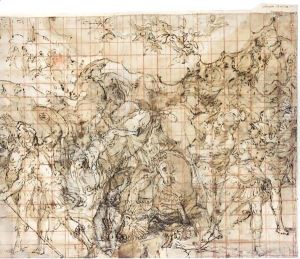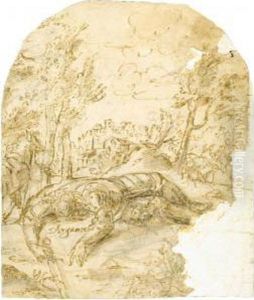Ottavio Semino Paintings
Ottavio Semino was an Italian painter active during the Renaissance, specifically in the Mannerist period. Born in 1524 in Genoa, Semino was part of a family of artists; his father, Antonio Semino, was also a painter. Ottavio's work is often characterized by the elongated figures and complex compositions typical of Mannerism, although he also incorporated elements of the High Renaissance into his art.
Semino's training is not thoroughly documented, but it is likely that he learned the fundamentals of painting from his father. He may have also been influenced by other Genoese painters of the time, such as Perin del Vaga, who had a significant impact on the artistic scene in Genoa after his arrival in the city in 1528. Semino's own style evolved over time, showing an ability to adapt and incorporate new influences, which may have included the work of Luca Cambiaso, another prominent Genoese painter.
Throughout his career, Semino received various commissions for religious works, including altarpieces and frescoes for churches in Genoa and its surrounding regions. His paintings often featured narratives from the Bible, saints, and the Virgin Mary. While not as widely known as some of his contemporaries, Semino’s works were appreciated for their vivid detail, use of color, and the emotional expressions of his figures.
Semino's legacy is somewhat overshadowed by the more famous artists of his time, and as a result, his works have not been as extensively studied or celebrated. Nevertheless, his contributions to the Genoese school of painting are acknowledged by art historians who specialize in the Italian Renaissance. He died in 1604, leaving behind a body of work that reflects the transitional period of Italian art from the High Renaissance to the more stylized and expressive Mannerist approach.



